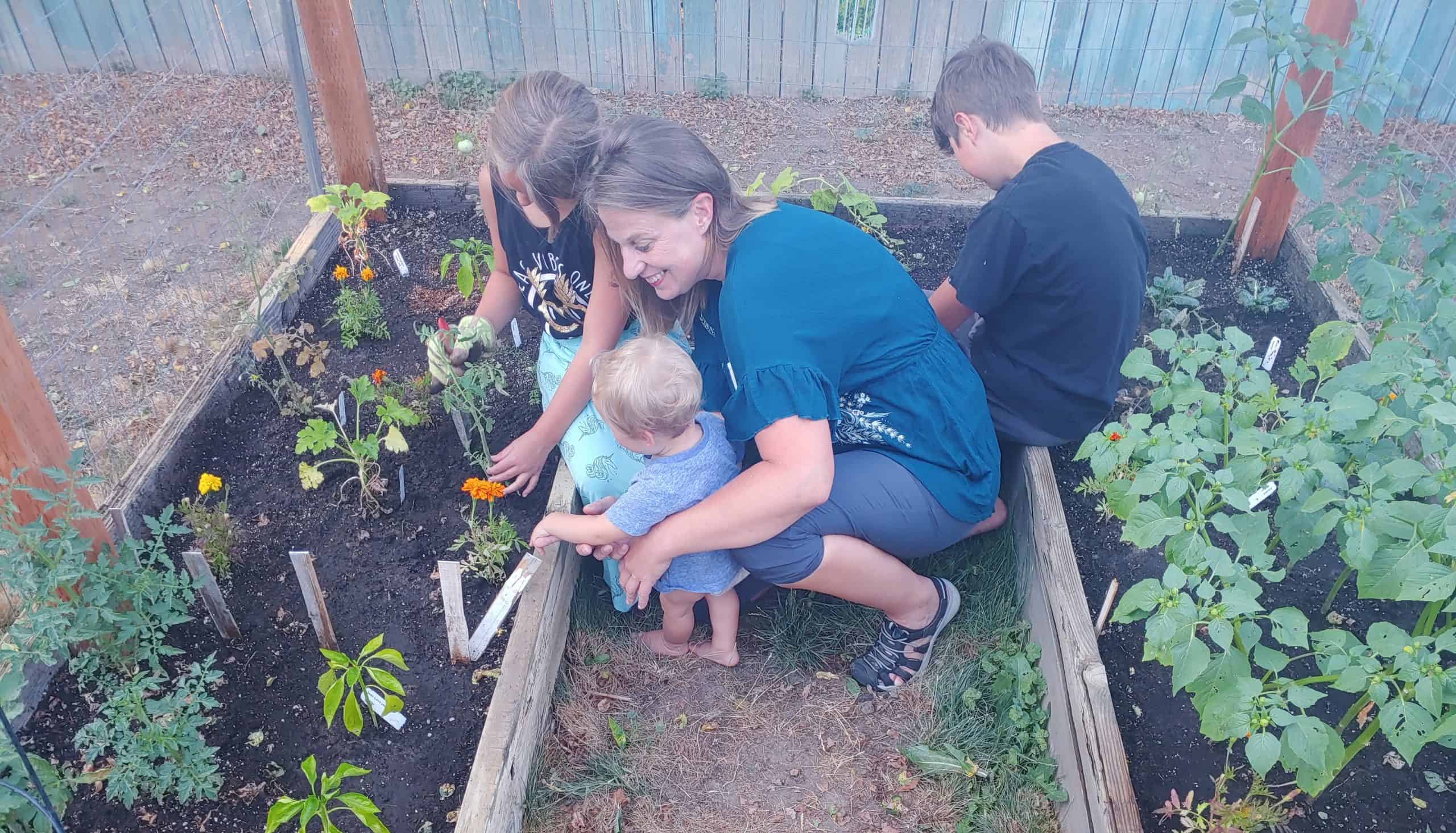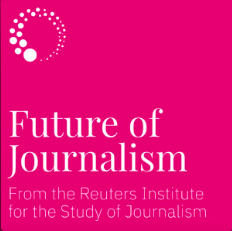As part of our winter membership drive, we are pulling back the curtain on what we do here at Reasons to be Cheerful. In this story, Contributing Editor Peter Yeung explores the evolution of solutions journalism and what we know about its impacts. This is part two of a three-part series. Click here to read part one and here to read part three. Want to learn more about our membership program? Click here.
When Karen McIntyre began her PhD at the University of North Carolina at Chapel Hill in 2012, she had never heard of solutions journalism. But one day a professor asked her to compile a list of “positive news” websites for a media research project.
“What I initially found was not solutions journalism at all,” says McIntyre. “It was good news journalism. Happy news. ‘Fireman saves cat’ kind of news.”
But later, while carrying out that research McIntyre came across the idea of “serious news done in a constructive way” — and her curiosity spiked. For her, it was the polar opposite of the media industry’s status quo: rather than agonizing superficially over the negatives of the day, this was about scrutinizing how and why things went right.

“It was a breath of fresh air,” says McIntyre, who then channeled her energies into finding out as much about this nascent practice as she could.
But there was little out there. In fact, she could find no academic research about the field at all. So in 2015, McIntyre published her dissertation analyzing the positive psychological effects of “constructive journalism” and “solution information” on the readers of news stories — to her knowledge, the first scientific research of its kind.
“These days there’s so much more research out there,” adds McIntyre, who is now an associate professor of journalism at Virginia Commonwealth University. (A list compiled by her colleague Kyser Lough contains 246 pieces of research to date.)
Ever since its beginnings, the journalism industry has sought to change society for the better and pick apart the merits and pitfalls of policies and projects around the world. Yet a fast-expanding movement is transforming the industry by promoting an approach to journalism centered on assessing responses to society’s problems – from the climate emergency to plastic waste, gender inequality and cultural division.
Advocates argue there’s an urgent need to reform the media amid a crisis of financial sustainability, plummeting trust, societal disharmony and a wider failure of journalism to serve the public interest. A survey by Pew Research in 2021 found 42 percent of US adults have no trust in information from national news organizations (up from 35 percent in 2019). More recently, the Reuters Institute 2023 digital news report, a survey of 93,000 people (who identify as news consumers) across 46 countries by Oxford University, found that 36 percent say they also often or sometimes actively avoid the news.
The solution? It’s complicated. But, aptly enough, solutions journalism could play a significant role.
“There are no simple solutions to what is a multifaceted story of disconnection and low engagement in a high-choice digital environment, but our data suggest that less sensationalist, less negative and more explanatory approaches might help, especially with those who have low interest in news,” the Reuters Institute report concluded.
In fact, a separate Reuters Institute survey of 303 media executives from 53 countries in January 2023 found that 73 percent of those leaders planned to publish more solutions and constructive journalism in the future in order to combat so-called “news avoidance.”
Weighed down by negative news?
Our smart, bright, weekly newsletter is the uplift you’ve been looking for.Professor McIntyre describes solutions and constructive journalism as two strands of a kind of “socially responsible” reporting. They both aim to remedy “news fatigue and perceived negativity bias,” she says, and together represent a shift away from conventional, “just the facts”-style reporting to a more contextual approach, where “journalists consider the bigger picture and play a more interpretive role.”
Two organizations have been at the heart of this emerging movement: The Solutions Journalism Network (SJN), a US-based nonprofit that was established in 2013, and the Constructive Institute, which was founded in 2017 and is based at Denmark’s Aarhus University.
While interpretations vary, solutions journalism reporting tends to follow the four pillars defined by the SJN: the response to a problem; insight learned from that response; evidence showing the response works; and an analysis of the response’s limitations. The wider-ranging constructive journalism includes solutions journalism as one of its components, but also should include multiple perspectives. A constructive journalism story is framed on the positive rather than negative aspects of communities involved and attempts to eschew simplicity in favor of nuance.
“Solutions and constructive journalism are different, but they fit together very well,” says Lisa Urlbauer, head of the journalism training programs at the Bonn Institute, a German nonprofit focused on constructive journalism that launched in March 2022. “They have this idea that we must put people’s needs at the heart of our journalism.”
There’s no doubt that there’s been a huge shift towards solutions-focused reporting. In recent years, the New York Times has launched Headway, an initiative “exploring the world's challenges through the lens of progress” and the Washington Post has created a section dedicated to climate solutions. In April, the New Yorker ran a special edition on climate solutions, and in October, NPR dedicated an entire week of coverage to solving the climate crisis. Publications such as NextCity, Grist and Mongabay have announced shifts towards solutions reporting, the last of which is launching a dedicated solutions desk. Meanwhile, Reasons to be Cheerful, one of the world’s first and few solutions journalism-only outlets, has been in action since 2019.
More concretely, the SJN’s story tracker page, a non-exhaustive list of stories that adhere to its pillars of solutions journalism, contains 15,600 articles that have been vetted internally. In addition, the network says it has trained 47,000 journalists across North America, Europe, Africa and Latin America, partnering with news organizations and journalism schools to help encourage the take-up.
“The industry has taken pretty huge steps generally,” says Allen Arthur, a solutions reporter and author of the SJN’s flagship newsletter Above the Fold.

Arthur, who often writes about and works with formerly incarcerated people, was himself hugely influenced by the new approach to reporting. “I had never thought about changing the whole structure of the story itself,” he says. “Instead I realized I could do journalism to help a community reach its goals and navigate obstacles.”
The Bonn Institute, whose initiative is centered on a close partnership with German media outlets including national broadcaster Deutsche Welle, characterizes that shift as a kind of Journalism 2.0 that should be the industry norm.
“It’s a second wave of digitization,” says Urlbauer. “For us, fostering better debate is a more modern kind of reporting. There are many people in society who do not feel adequately heard by mainstream journalism, and we need to broaden our approach.”
However, while investment into the approach has ramped up massively, the evidence of solutions and constructive journalism’s impact is less clear-cut.
For one, the goals of the movement are various and subject to debate: to build trust, to create a more inclusive industry, to catalyze the uptake of successful solutions, to counteract stereotypes, to improve readers’ mental health, to reduce polarization and division in society, or perhaps to make the media more financially sustainable. What research there is has tended to be low-level in scope or focused only on certain areas.
“In every experiment that has been done in English that we could find, there was a significant impact on audiences’ emotions,” says McIntyre, who published a review of the literature involving experiments on solutions journalism in August. “They make people more positive or less negative. That was clear.”
While those findings are useful, they are limited. In fact, 17 of 22 studies McIntyre analyzed focused on the emotional impact of solutions journalism. Only one looked at the impact of solutions journalism on trust. But for many practitioners, the goal of solutions journalism is not to be “feel-good” or “positive” — but rather to create change.
“Solutions journalism is not good news per se,” says Arthur. “It is not this big wonderful, happy ending. It should be something we can learn from.”
Small-scale research commissioned by the SJN in 2020 found that of the 628 people surveyed across the US, 51 percent said they prefer “solution” stories compared to the 32 percent who prefer “problem” stories and the 17 percent with no preference. Eighty-three percent of respondents said they trusted a solutions journalism story they viewed, compared to 55 percent who said the same about the problem-focused story.
However, the limits of the research does not mean a tangible difference isn’t being made. In fact, McIntyre argues there’s little evidence that the approach doesn’t work, whereas more and more outlets are taking it up and there are many examples of solutions reporting creating impact. “I’m not really seeing negatives,” she says. “We have reason to say that solutions journalism is useful and beneficial.”
More recent findings have also responded to some of those concerns. A study of 348 US undergraduate students by the University of Maryland last year found exposure to solutions journalism was “positively associated” with the increased likelihood to support collective action to fight for better policy. Other research has found it has improved coverage of gender violence and immigrants as well as conflict reporting.
The SJN also recently launched an Impact Tracker containing numerous, robust examples of how solutions reporting has led to change – from encouraging authorities to replicate schemes pioneered elsewhere to millions of dollars of donor support for organizations implementing solutions.
Perhaps a more significant hurdle, however, is the fact that almost all of the research is focused in the Global North: 64 percent of research identified by McIntyre was based in North America and Europe. And that is reflective of overall adoption of and support for solutions reporting — with far less development in Latin America, Africa and Asia.
“Constructive journalism has gained a foothold in Africa but it’s not mainstream yet – far from it,” says Joy Muthoni, a Kenyan academic who analyzed the uptake of constructive journalism in Kenya for her PhD. “Journalists in Africa simply haven’t had the time and resources and training to properly adopt it yet.”
The SJN’s Africa Initiative, which launched in 2020 to provide training and support to 60 African newsrooms including Nigeria Health Watch, has attempted to address that imbalance. And it has successfully led to nuanced reporting on vaccinations, malnutrition, sexual health, and more across Kenya, Nigeria, Rwanda and Uganda.
But Muthoni believes that model is a tricky tightrope to walk.
“I would be as bold to say that the trajectory of constructive journalism in the East African context is solely being driven by Western organizations,” she says. “That can be problematic in many ways. It’s like a new form of colonialism.”
Nonetheless, Muthoni believes that the continent would benefit from a constructive and solutions-oriented approach to journalism – following in the footsteps of the African philosophy of Ubuntu (the idea of shared humanity) as well as the history of development and peace journalism in previous decades. “But this isn’t something that happens overnight,” she says.
The SJN’s Arthur also admits there’s a long way to go when it comes to addressing the broader ingrained reporting methods such as “horse-race” coverage of political elections, focusing on candidates rather than issues that affect voters, and the fact that “terrible news will almost always be the lead items and win all of the awards.”
A decade on from its foundation, however, the SJN has undoubtedly played a role in “systematizing and supercharging” solutions journalism, as Arthur puts it — and in November the nonprofit announced its first-ever awards, representing another key landmark in the effort to make journalism more valuable, kind and impactful.
“We don’t know how solutions journalism is going to grow and evolve in the next decade,” says Arthur. “But I think the quality of stories is getting better and better and the practice is growing in incredible ways.”












